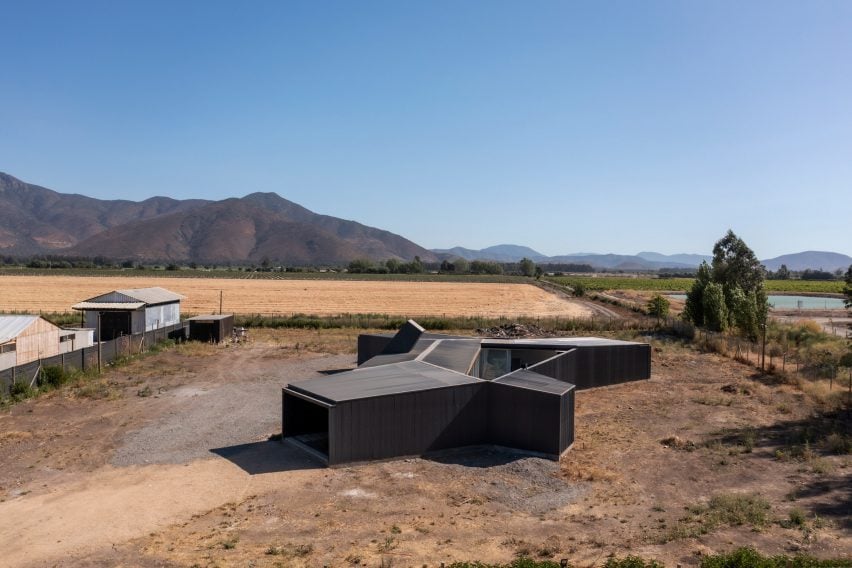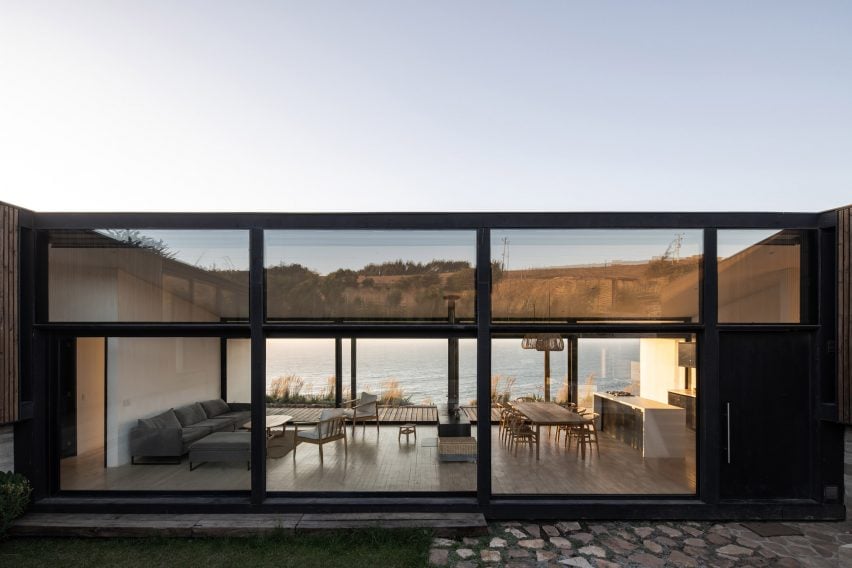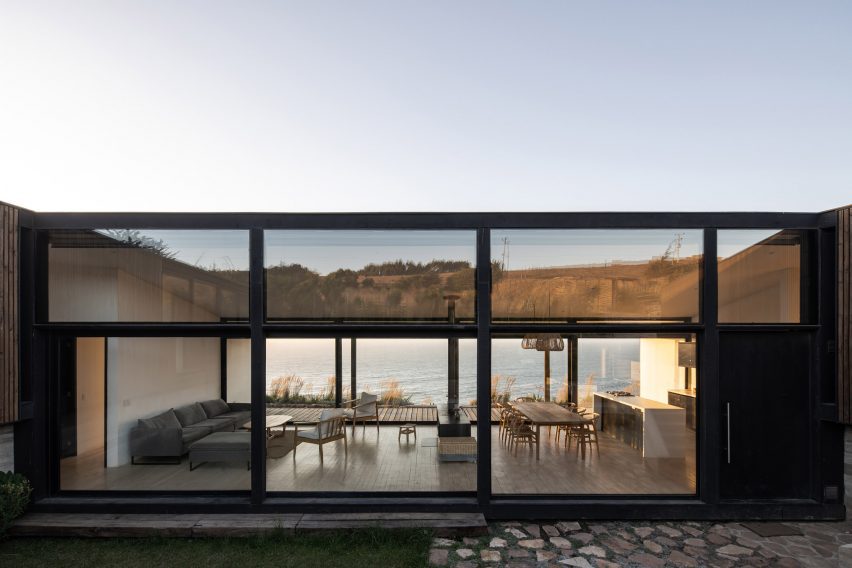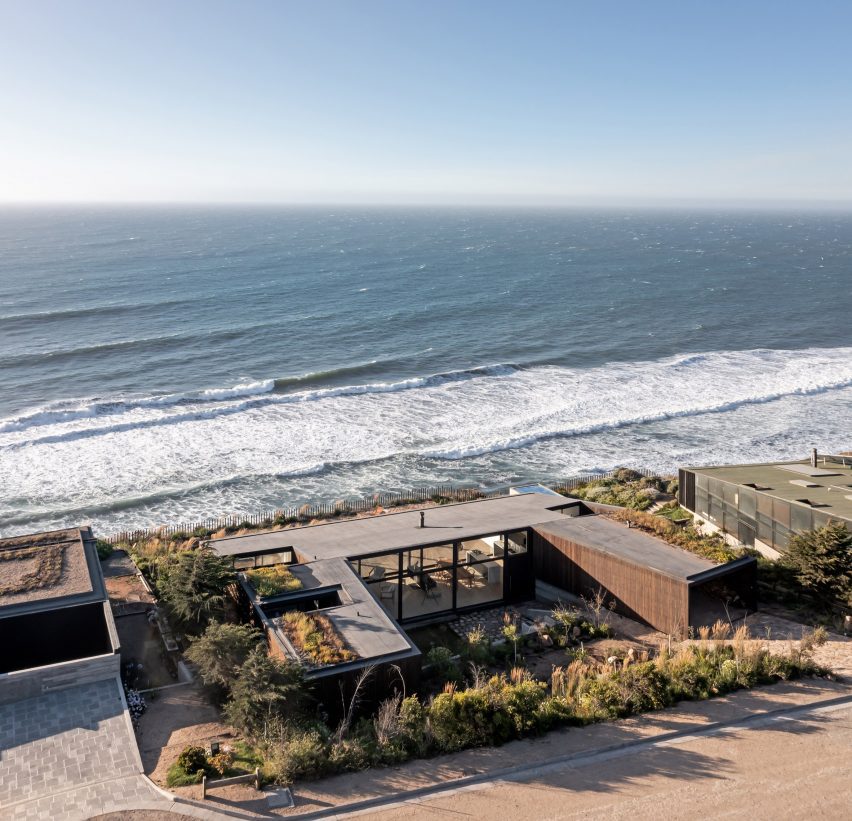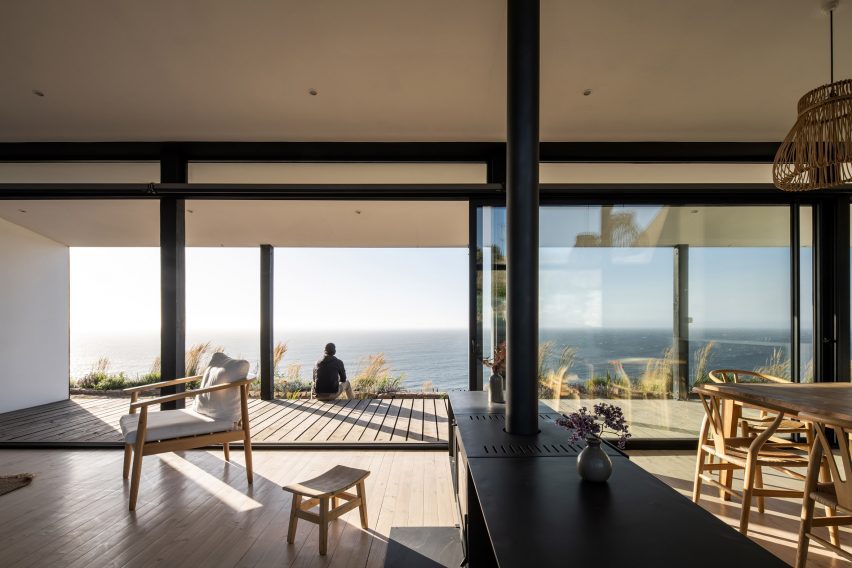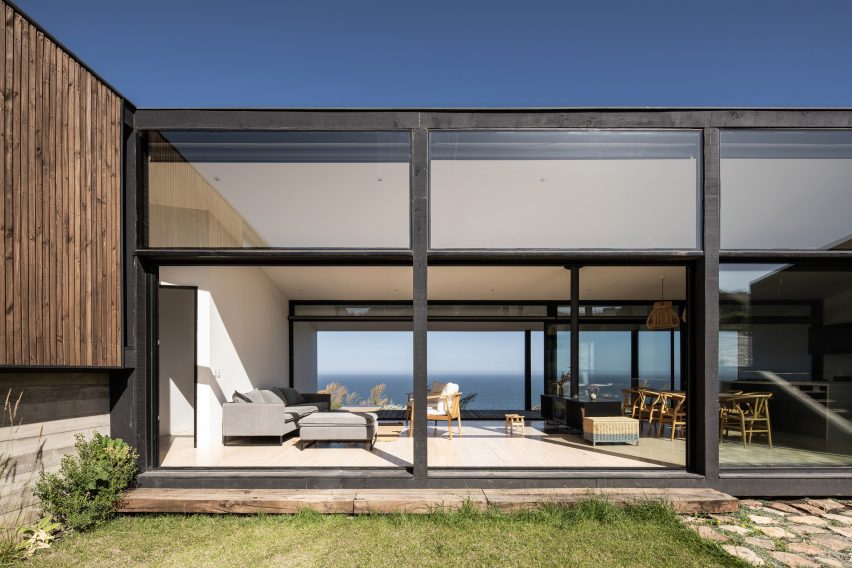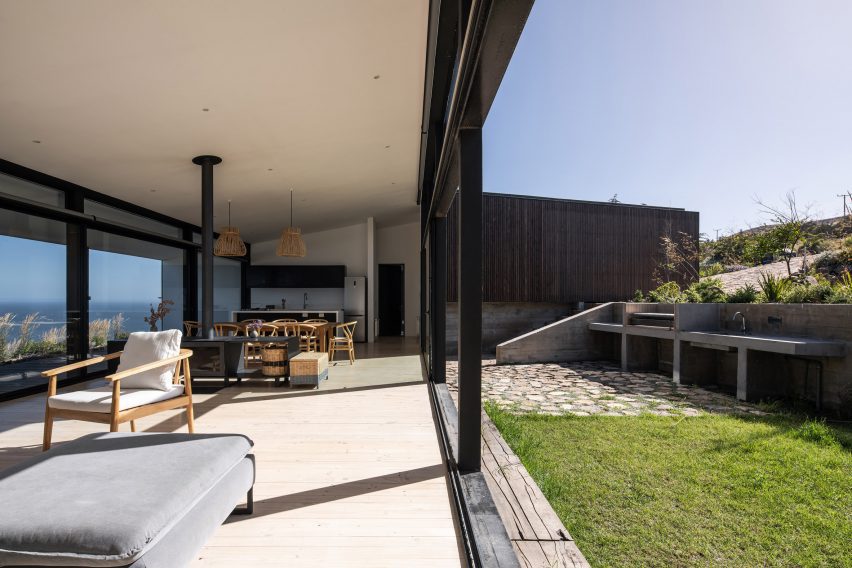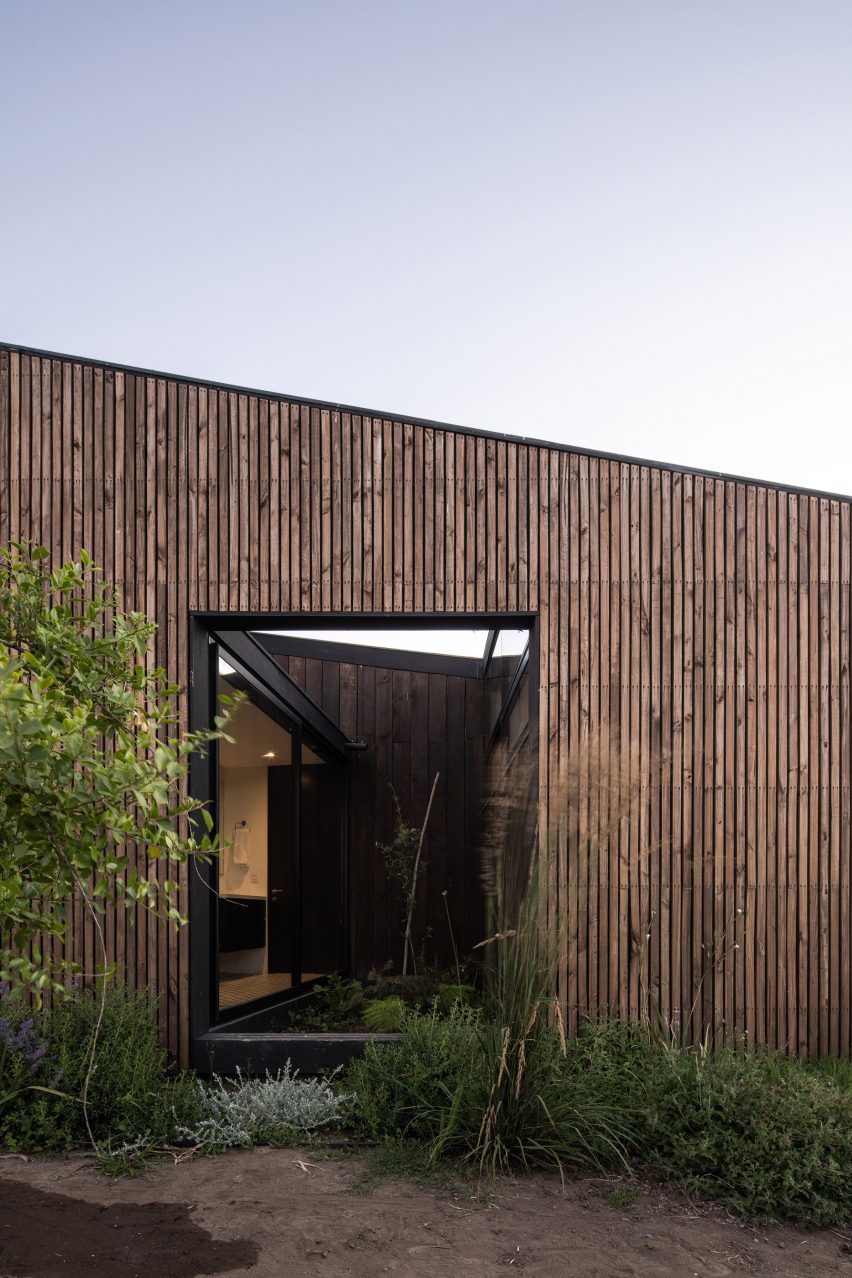Paire House by Rodolfo Cañas provides shelter for a Chilean family
The tale of Jonah and the Whale informed the design of this house in Chile, which architect Rodolfo Cañas shaped around two gardens.
In the rural town of Pomaire, less than an hour southwest of Santiago, Cañas designed the single-family home to shelter its inhabitants from the elements and the surroundings.
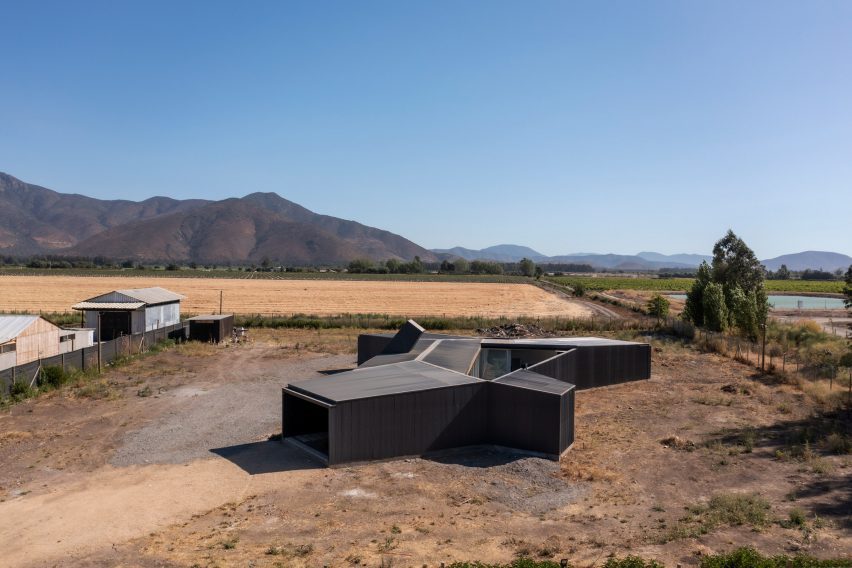
The architect likened the shielding quality of the house to the whale that swallowed the prophet Jonah in the biblical story.
“In some ways, the Paire House can be comparable to the whale that protected Jonah during the storm,” said the architect. “In a rural, dry, rugged environment and also close to a highway with a heavy traffic flow, this house works as a container; a protective body, which separates its inhabitants from the hostile environment and makes them look towards a more sheltered interior.”
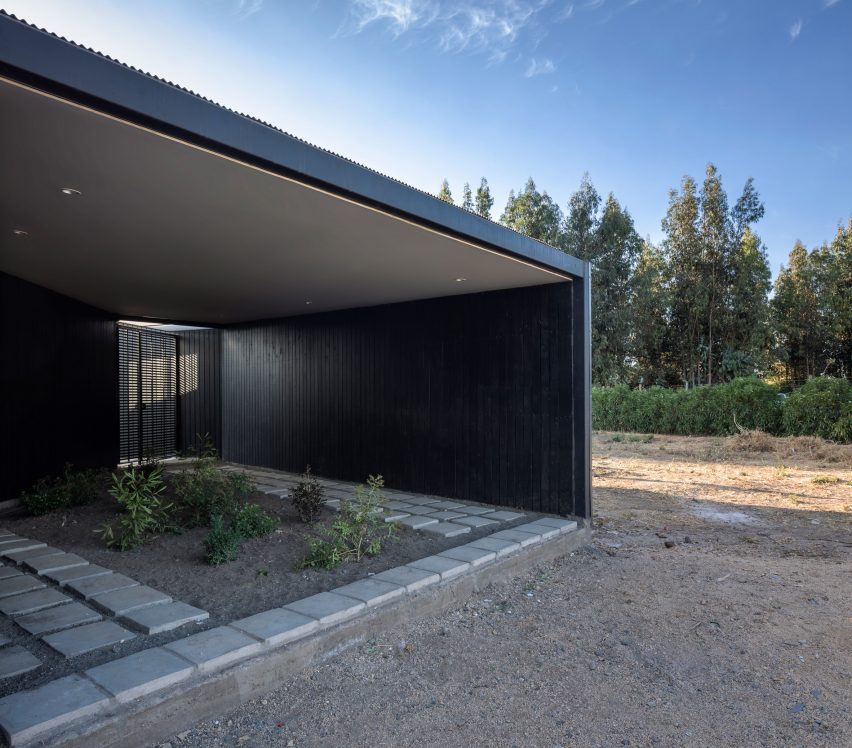
Viewed from above, the house is shaped like an abstract human body with four limbs that protrude at different angles.
Two parallel circulation routes – one public and one private – and a desire to orient rooms towards specific views dictated this unusual layout.
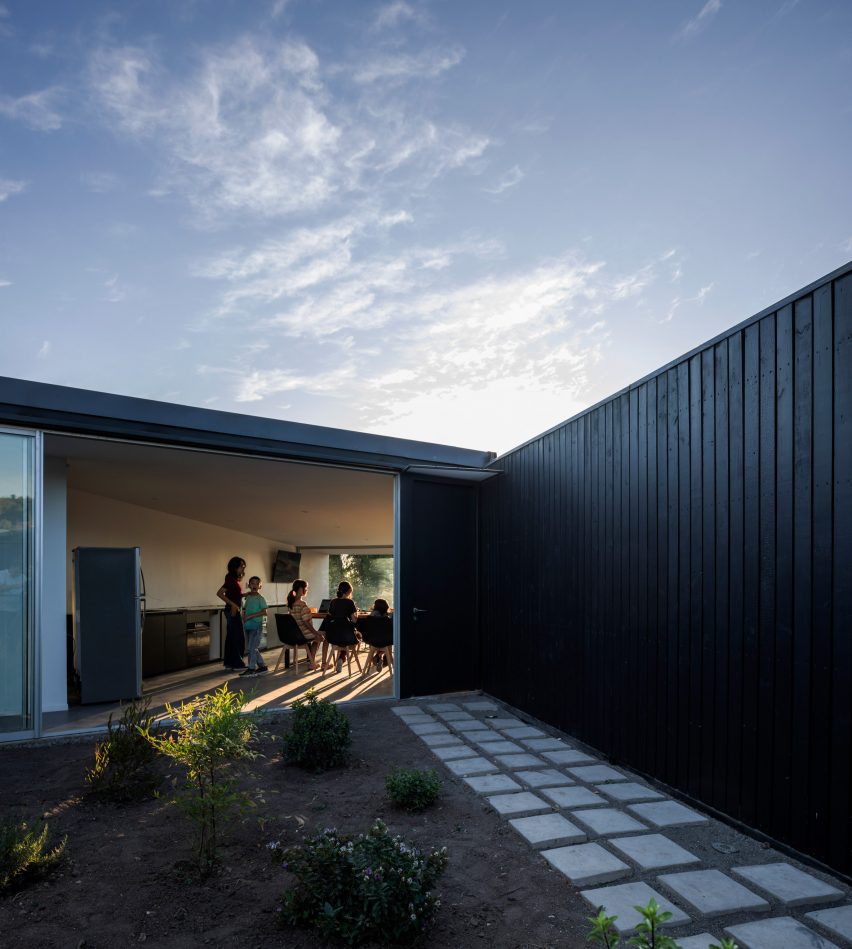
Entrance to the property is via a garden to the north, which is shaded by a canopy and landscaped to funnel visitors towards one gate, and the residents to another.
“This forms the cut between the rugged exterior and the sheltered interior of the house,” said Cañas. “It is a covered garden and considers a more controlled natural lighting in order to generate the cut coming from the outside.”
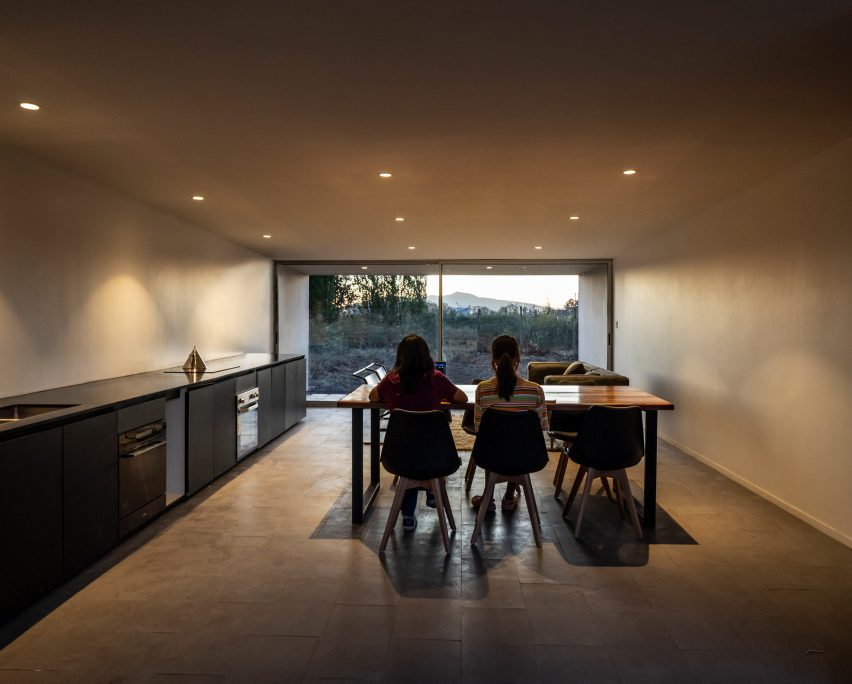
The “body” of the house contains a row of four bedrooms that all face an enclosed garden through floor-to-ceiling glass doors.
Guests pass through the garden on their way to the living spaces, while the family can traverse an interior corridor that passes behind the bedrooms.
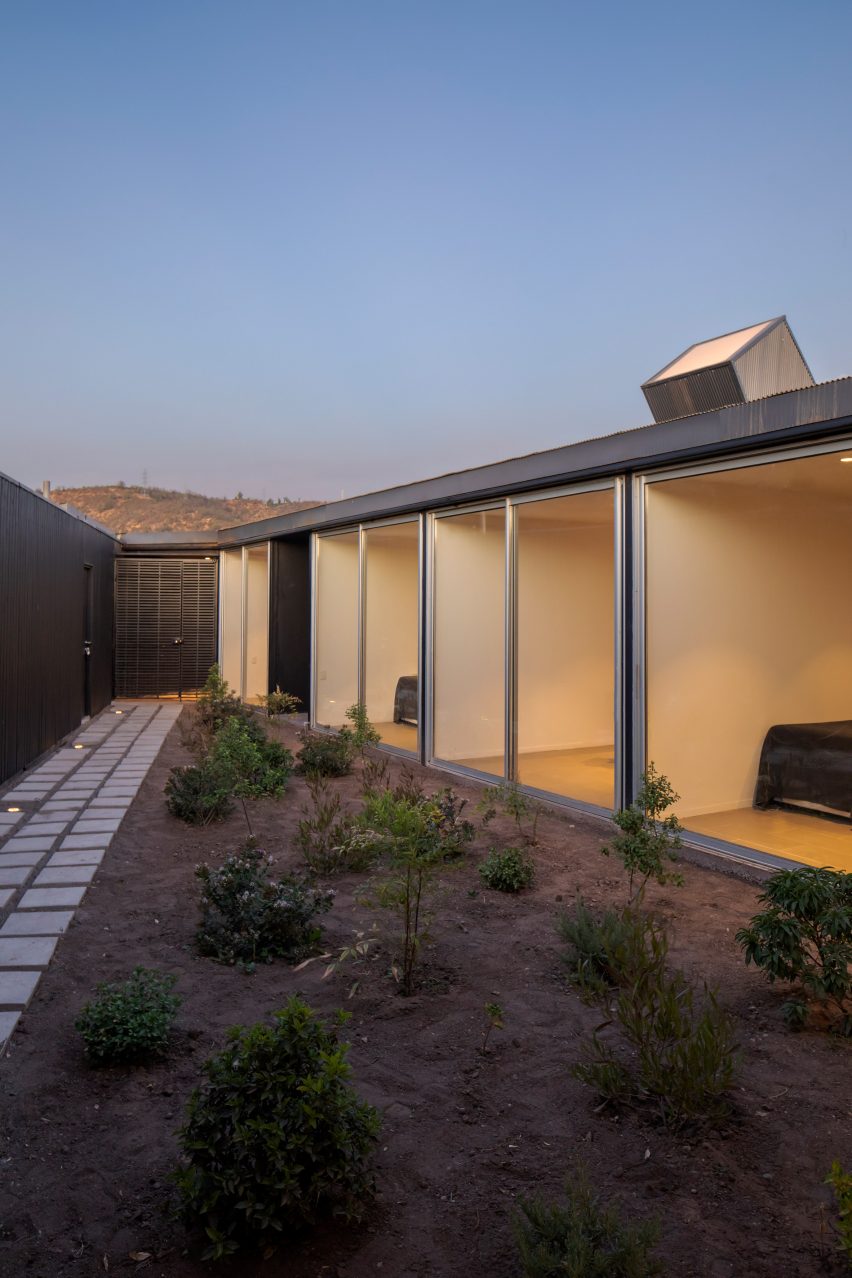
Light is brought into this passageway via a skylight that protrudes at an angle above the low roofline.
Overlooking the central garden, an open-plan kitchen, dining and lounge area occupies the building’s southwest “leg”.
The primary suite is located in the other, facing southeast. Both open onto terraces that face carefully chosen views of trees in the foreground and hills in the distance.
“The trees are a little misleading when you’re inside, hinting that the outside is wooded and less hostile than it really is,” Cañas explained. “Meanwhile, the nearby hills speak of the real context: a wild and dry environment.”
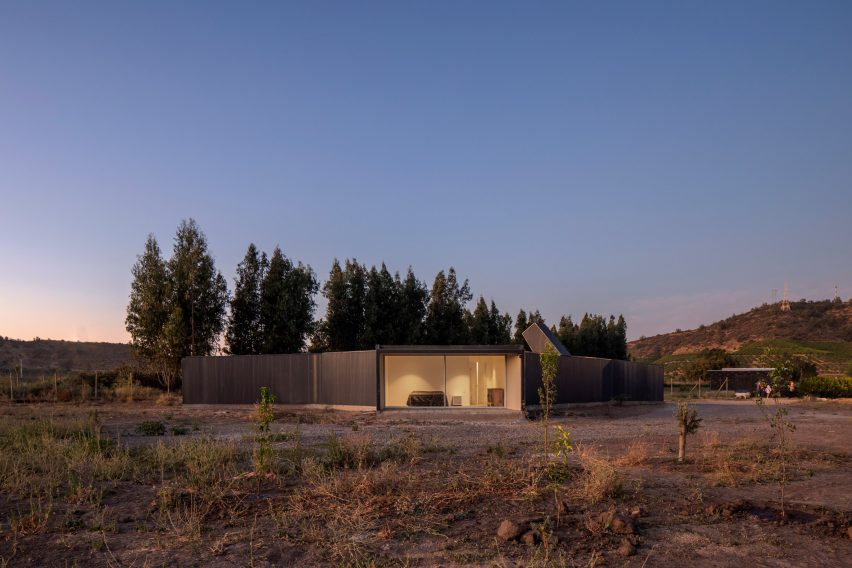
Off the central outdoor space, close to the entry, is another small appendage that contains a games room.
Largely devoid of windows, the exterior walls and internal gardens are wrapped in blackened wood, while interior spaces are minimally decorated and furnished.
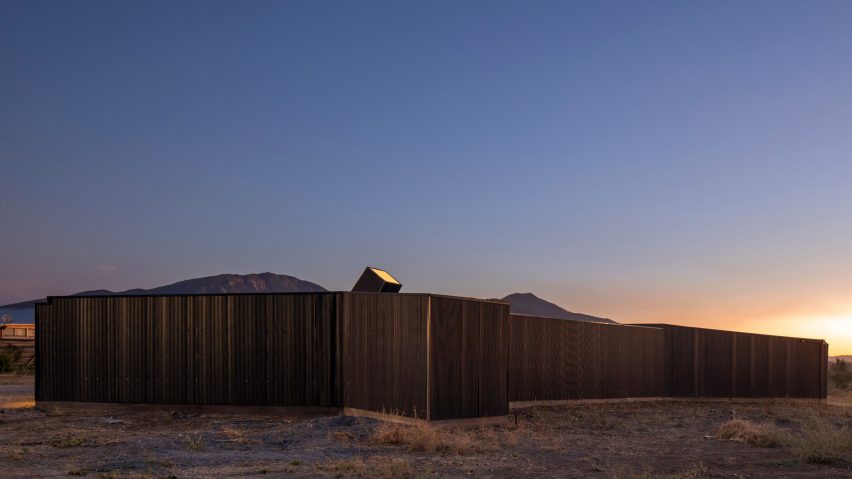
Charred timber appears to be a popular choice of cladding material for Chilean houses.
Other examples of its use in the country include a home sheathed entirely in blackened pine, an angular mountain cabin and a beach residence comprising stacked volumes.
The photography is by Aryeh Kornfeld.
Project credits:
Architect: Rodolfo Cañas
Builder: Mauricio Fuenzalida
Drawings: Samuel Riveros

